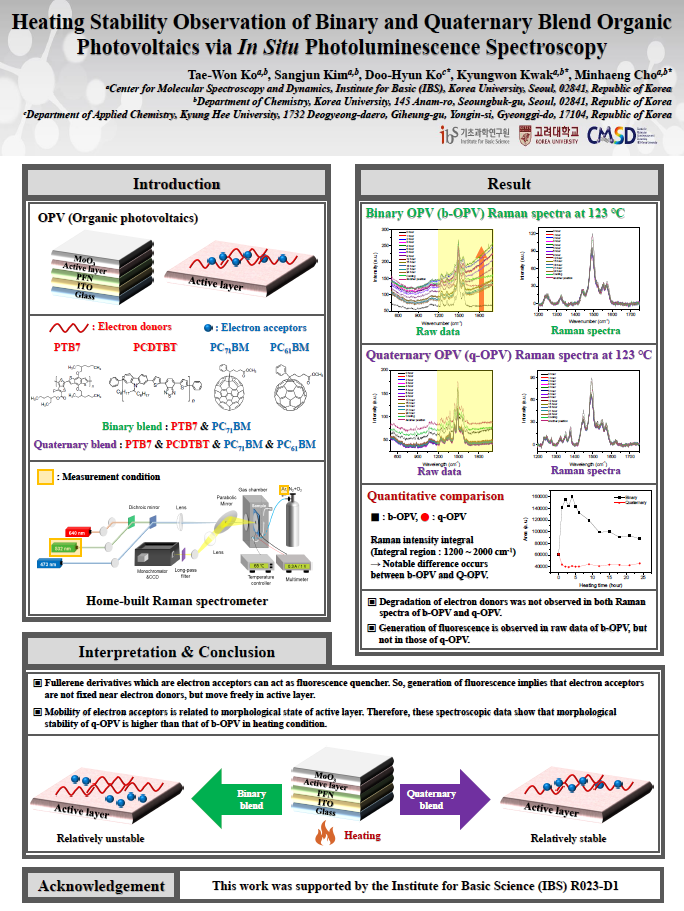mainmenu
Heating Stability Observation of Binary and Quaternary Blend Organic Photovoltaics via In Situ Photoluminescence Spectroscopy
2018 KCS 122nd

Organic photovoltaics (OPV) are remarkable solar cell because its processability and competitive price. Performance of OPV is directly related to its power conversion efficiency (PCE), which depends on state of bulk heterojunction in device. Bulk heterojunction of OPV is commonly binary blend (b-OPV), one component is conjugated polymer (electron donor) and the other is fullerene derivative (electron acceptor).
Unfortunately, the PCE of these ordinary OPV rapidly decreases in heating condition. Recent researches show that using quaternary blend (q-OPV) composed of two different electron donors and two similar electron acceptors can increase thermal stability of OPV. However, in situ spectroscopic studies to interpret this phenomenon on a molecular level are insufficient until now.
Here we show that in situ spectroscopic data obtained by using home-built Raman spectrometer. In both cases of b-OPV and q-OPV, intensity of Raman peaks of conjugated polymers did not change significantly during heating. Interestingly, generation of fluorescence was observed in b-OPV, but not in q-OPV. It is known that fullerene derivative can act as fluorescence quencher, so this spectroscopic difference may be related to state of electron acceptors. Accordingly, we concluded that mobility of electron acceptors and morphological state in the b-OPV are more affected by heating than those in the q-OPV. We hope that this research will help an improvement of thermal stability of OPV.


